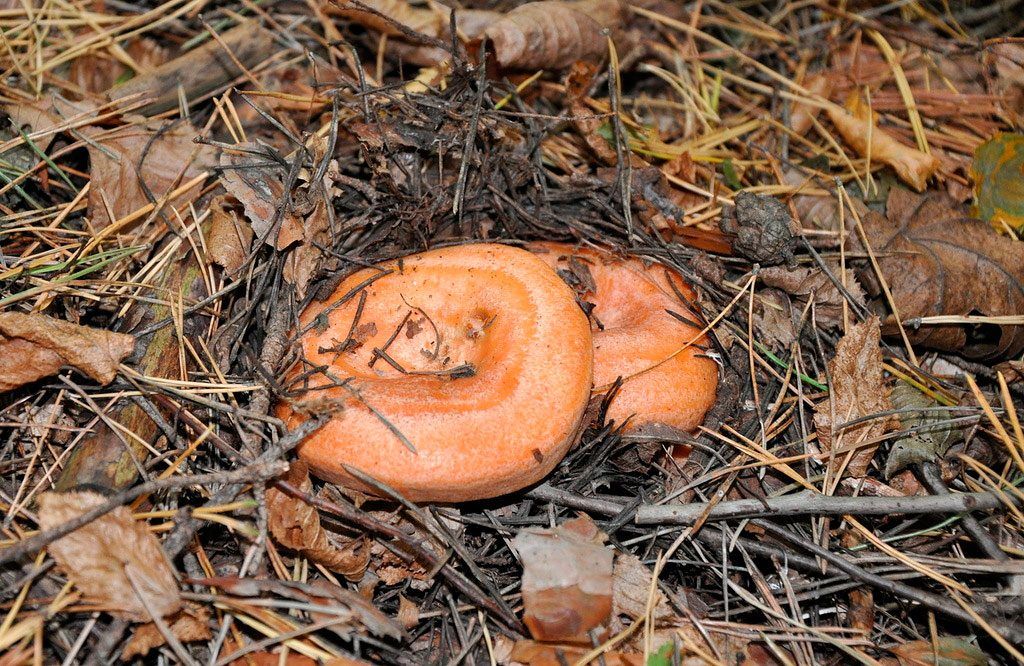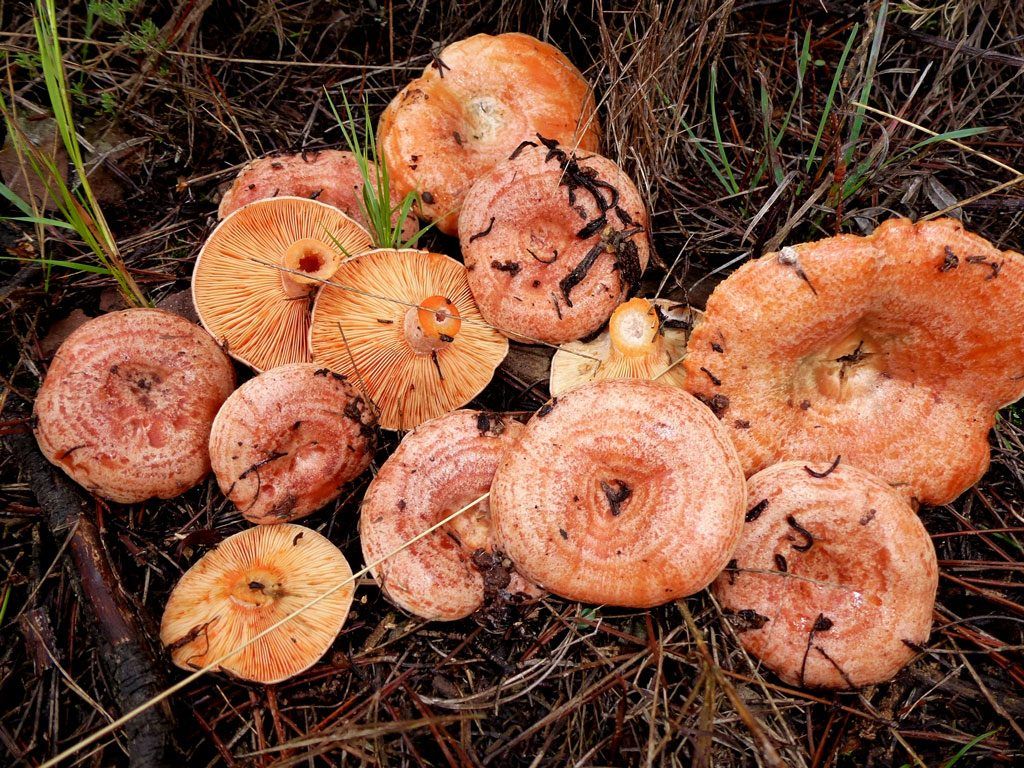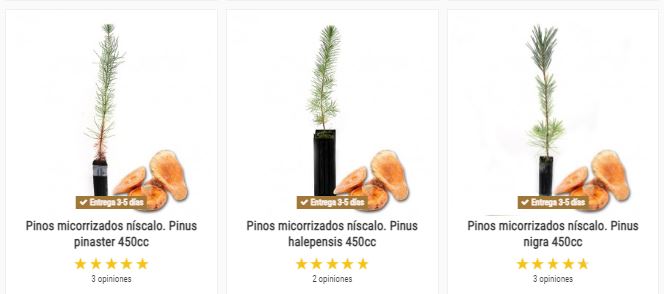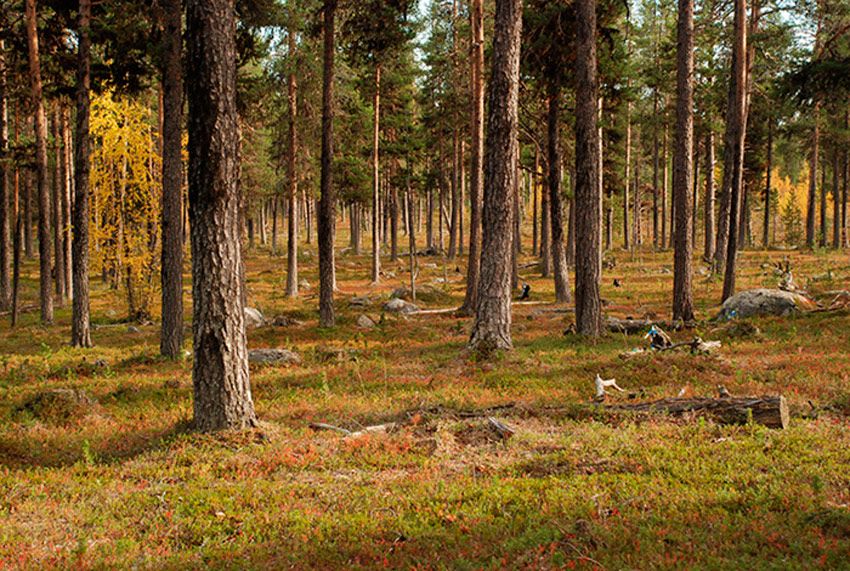How to grow chanterelles at home: the definitive guide
3 years ago · Updated 6 months ago

How to grow chanterelles? Is it possible? Of course it is! And with this growing guide, we will explain how, where, and when.
A popular saying goes that there are only two types of mushrooms: chanterelles and everything else. It's not surprising that many people believe this, as these mushrooms are real mycological sensations. It's the end of summer, you see a photo on social media, and all of us fans are dusting off our wicker baskets and sharpening our mushroom knives.
With this guide on How to grow chanterelles at home, we want to help you get started with your own robellones. Remember that all the products you need to grow chanterelles and other mushrooms can be found in our online store.

- Níscalos, robellones, guíscanos, rovellons…
- Characteristics necessary for successfully growing chanterelles
- How can delicious milk mushrooms be cultivated in a forest plot?
- Growing delicious milk mushrooms from mycorrhizal pine trees in a nursery
- Mycorrhizing plants with inoculum. A good option for growing wild mushrooms
- What is mushroom inoculum?
- What product will I need to apply the lactarius inoculum to pine roots?
Níscalos, robellones, guíscanos, rovellons…
As this variety of mushroom is the most sought-after in the mountains, it is normal for it to have a multitude of popular names. Almost as many as there are villages! What is clear is that its scientific name is Lactarius deliciosous. Lactarius because it belongs to a genus characterized by the secretion of a milk-like latex, intense orange in color, and deliciosous because it is to die for!
The popular names are not that complex, but they are very varied. They generally refer to the morphological characteristics of the mushroom adapted to the popular language of the region: ziza gorri (in Basque), rovelló, pinetell (from the place where it grows), esclatasang (from the color of the latex secreted), guíscano, mizclo, pinenc, reboñuelo
If you want to taste its flavor in our gourmet chanterelle section, you will find dehydrated chanterelles, powdered, canned, and in liqueur
Lactarius deliciosus, a mushroom that is difficult to confuse with any other
It is not very common to confuse a delicious milk cap with another species, although it can sometimes happen. If we look at the color of the gills, which are always orange, and the latex they secrete when cut or scratched, which is also an intense orange color, confusion will be difficult.
If we ignore these characteristics, we could confuse delicious milk caps with other inedible milk cap species. The one that most closely resembles it is perhaps Lactarius torminosus, also known as false milk cap or rovelló de cabra. Simply turning the mushroom over will allow us to distinguish it clearly.
The pungent, unpleasant taste of the false rovellón will also help us to classify it correctly. However, even if we manage to eat it, it is not poisonous, although it is very unpleasant.
Characteristics necessary for successfully growing chanterelles
Not all plots are equally suitable for growing Lactarius deliciosus. And although this mushroom is very adaptable, the plot may not meet the minimum conditions for it to grow. To avoid low yields, follow these recommendations.
We tell you what to consider when choosing forest land and harvesting your own chanterelles
What pH do chanterelles need to grow?
Chanterelles are considered an all-terrain mushroom, and although they prefer acidic soils, they have no problem growing in sandy or calcareous soils.
Although they like moisture, like all mushrooms, it is not advisable to choose a site that becomes waterlogged, as they will not have much opportunity to fruit.
Water your plantation to ensure production
Mushrooms are water, and they need it to grow. For this reason, irrigation, especially in the first few years, is essential to avoid losses and ensure good development.
The ideal is to use drip irrigation, which is a little complicated in forest cultivation but is increasingly used to ensure production. There are irrigation basins on the market that you can easily install on your plot.
Irrigation of resinous pines in summer and during periods of high temperatures and low rainfall is essential. Remember that the roots where mycorrhization must take place must be shallow, no more than 18-20 cm, and these will not develop without moisture. Otherwise, the tree will search for it at greater depths.
What diseases or pests does it have?
The main advantage of the symbiotic relationship that milk mushrooms and pine trees establish is that they protect each other, so pests are not common in this type of crop.
No chemicals. Do not use herbicides or fungicides
The presence of these products can seriously endanger the development of the mycelium and the mushroom. The best way to remove plants once planting has been completed is by hand.
They also do not need fertilizer, as they obtain their main source of nutrients from the pine roots. Do not use fertilizer, as this can endanger the development of the mycorrhiza.
When is the best time to start growing delicious milk mushrooms?
We will choose periods with average temperatures, from late winter to early summer, although the best time may be in the fall.
During periods of high temperatures, we will need to ensure irrigation, especially when we have just planted.
What is the yield of a milk cap mushroom crop?
It is very difficult to talk about industrial mushroom production. There are so many factors that influence it that, unless all of them are controlled, production varies greatly.
According to studies, the forest production of delicious milk caps in wild pine forests ranges from 0.5 kg to 15 kg per hectare.
If we are talking about controlled plots with optimal conditions, production is different and ranges between 700 and 1,500 grams per tree. Much more! These figures will depend on the planting density, the type of plot, etc.
How can delicious milk mushrooms be cultivated in a forest plot?
When we talk about delicious milk mushrooms, rossinyols, mizclos, or pinatells, it is impossible not to think of these orange-colored mushrooms that drive mushroom lovers crazy. Delicious milk mushrooms are the most sought-after wild mushrooms by mushroom pickers, with the exception of porcini and oyster mushrooms. Of course!
As a result, the mushroom cultivation industry is making great strides in mastering their cultivation.

Growing delicious milk mushrooms from mycorrhizal pine trees in a nursery
This is an option chosen by many growers of Lactarius deliciosus. Not everyone has a plot of forest where there are already mature pines, so the only option is to bring them to the plot ourselves. In this sense, we can rest assured because there is a wide variety available, including Pinus sylvestris or red pine, Pinus pinaster or maritime pine, Pinus pinea or stone pine, Pinus nigra or black pine, and Aleppo pine or Pinus halepensis.
All these varieties are already supplied with mycorrhizae, with the fungus adhering to the roots of the pine tree.
Why are pines mycorrhized with milk mushrooms?
When we talk about Lactarius deliciosus, sanguifluus, ... in short, any of the edible milk mushroom varieties, we are talking about mycorrhizal species. This means species that need to associate with the roots of certain plants in order to develop. In the case of milk caps, these plants are exclusively conifers, i.e., pines and firs.

How many types of pine trees can be found in our country?
In our blog, we have already talked about the species of pine trees on the Iberian Peninsula. We are actually a territory with a wide variety of tree species, and when it comes to pine trees, we can find several species: Pinus sylvestris, pinea, pinaster, nigra, halepensis, and, exclusively in the Canary Islands, pinus canariensis.
With the exception of the Canary Island pine, all other pine species can already be found mycorrhized. If you would like to buy niscalero pines, we recommend our section. Take the plunge and start your own robellones plantation!
Can I inoculate pine trees that I already have on my land?
Many customers ask us this question. Of course it is possible! And what's more, with very good results. Of course, not all plants have the same conditions or the same possibilities, so we will have to choose carefully which ones we want to inoculate.

What preliminary care does the land require before planting mycorrhizal pines?
As this is a forest crop, we must avoid applying any fungicide treatments and not add any organic matter. If we decide to apply a supplement, it must be organic, mild, and applied 2 to 3 weeks before transplanting.
We will also avoid trampling the area too much, as this will compact the substrate and prevent its development.
How long does it take for delicious milk mushrooms to appear in a pine forest plantation?
When we talk about timeframes in mycology, it is very difficult to define them. Why? There are many different factors that can influence a plantation: temperature, humidity, orientation, type of soil, vegetation with which it must interact, human or animal activity, etc., but above all, the competition that exists underground between the different mushroom mycelia. This is why the timeframes are flexible, but if the optimal conditions are met, we should not have to wait more than 3 to 5 years to start harvesting our first delicious milk mushrooms.
Buying mycorrhizal pine seedlings from a nursery, an alternative option
In our section on mycorrhizal pines, you will find pines of the silvestris, pinea, pinaster, nigra, and halepensis varieties, all already mycorrhized with Lactarius deliciosus. All you have to do is plant them on the chosen plot, and in a few years, you can start harvesting your own delicious milk caps.
Choose from the different sizes of pine trees available, from the smallest, between 1 and 2 years old and in forest pots, to more mature specimens, larger in size and already planted in pots.

Mycorrhizing plants with inoculum. A good option for growing wild mushrooms
Basically, this technique consists of adding milk mushroom seeds directly to the roots of mature pine trees.
This option is perhaps the most widely used if you want to grow milk mushrooms. The reason is obvious. Our geography is full of pine forests. Pine forests of all kinds. With young and mature pine trees growing in the wild or in plantations. In short, we are a country with a lot of pine trees. And what roots do milk caps associate with in order to grow? Those of pine and fir trees, of course.
Many people who want to start growing milk caps or rovellones opt for this method, applying a milk cap inoculum to the roots of mature wild pine trees. Well... “mature” isn't quite the right word, because we can apply mycorrhizal inoculum to plants from 3-4 years old. This transforms practically all the pine trees on the mountain into potential producers of milk mushrooms.
What is mushroom inoculum?
Basically, when we talk about mycorrhizal inoculum, we are talking about (explanatory text by Juan Hifas). Ensuring direct contact between the plant's roots and the milk cap inoculum will greatly increase the chances of the mycelium growing and developing with the plant. Of course, there will be other environmental conditions that must be met, because without the combination of all these optimal conditions, the result can vary greatly. As with any mushroom cultivation.
How to grow milk caps by applying inoculum. Conditions for mycorrhization of adult pines
We will preferably choose plants that are 5 to 10 years old. This is the age at which milk mushrooms develop best. In younger plants, the mycelium will take longer to develop, and in older plants, there is a greater possibility that other mycelia are already developing in the roots.
It should be remembered that milk mushrooms are considered to be medium-development fungi and that the mycelium is replaced depending on the age of the plant, giving way to later-developing species such as boletes.
What is the best area to apply the inoculum?
The crown fall is the area of the roots that receives the most rainfall. This is why root development is greater and, above all, because they receive more rainfall, the roots are more superficial.
The vast majority of mycorrhizal mushroom mycelia develop between 5 and 10 cm deep, so we will need shallow roots to achieve optimal results.
We will need to apply the inoculum so that it is in direct contact with these roots. In this way, the mycelium of the milk cap attaches itself to the roots thanks to the gel in which it is impregnated
How many applications of inoculum should I apply per tree?
For a young or medium-sized pine tree, we will apply 4 applications of inoculum. We will choose 4 separate areas in a cross pattern, where we will remove the topsoil until we locate the first surface roots. Once located, we will carefully remove the soil and apply the inoculum.
If the tree is larger, we can increase the number of applications to 5 or 6.
We will thoroughly soak the roots and cover them with the substrate we removed. It is important to water once we have finished the application to promote the development of mycorrhizae.
What product will I need to apply the lactarius inoculum to pine roots?
The only thing you will need are mature pine trees and the dose of Lactarius mycorrhizal inoculum. In our inoculum and spore section, you can purchase Lactarius inoculum in ½ l and 1 l pots and in xxx l containers for larger applications.
In the following video, we explain how to apply the inoculum step by step. You will see how simple it is. As always when handling mushroom cultivation products, disinfection and hygiene must be maximized to avoid contamination. A mask and gloves are therefore essential for application.

Where can I buy milk cap inoculum, mycorrhizal pines, and products for growing milk caps?
We hope we have cleared up any doubts you may have had about harvesting your own milk mushrooms. But if you still have questions about how to start growing milk mushrooms, we will be happy to help.
Don't forget to share this guide and follow us on social media 😊
Cheers and delicious milk mushrooms!

Te pueden interesar